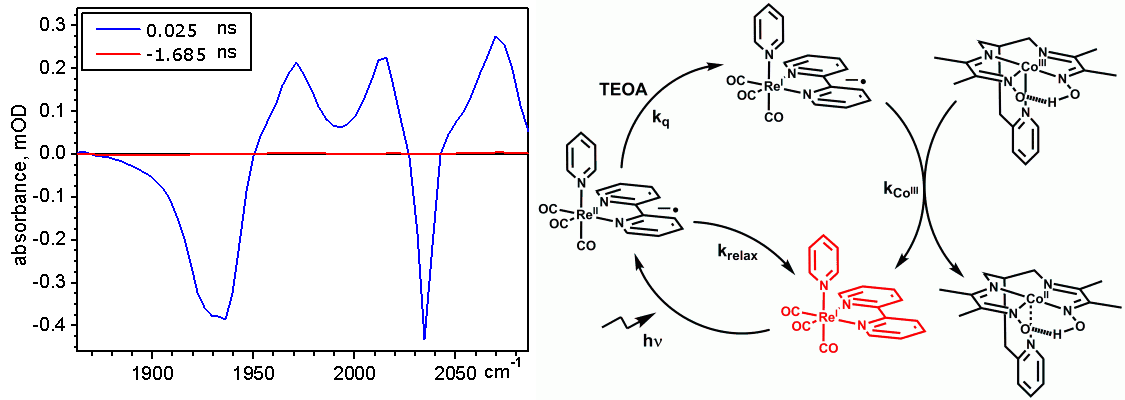Metals in Medicine and Artificial Photosynthesis
| Technetium and Rhenium are core elements in our research. Both are central for new molecular imaging agents and metal-containing, targeting and therapeutically active compounds. Since they belong to the same triad, the unique option of combining minute quantities of 99mTc for imaging with macroscopic amounts of cold rhenium homologues paves the way for a small molecule-based theranostic approach. Different from coordination compounds, our complexes are of organometallic nature, containing CO, cyclopentadienyl or arene ligands and others. These ligands are integral parts of pharmaceutical lead structures. Integrating organometallic complexes with these structural features allow us to prepare authentic mimics of such receptor targeting, organic pharmacophores. As a specialty of 99mTc chemistry, all bioorganometallic 99mTc imaging agents must ultimately be prepared from water and in quantitative yields. For any later, eventual application in clinical routine, these conditions are mandatory. To find respective pathways represents a great incentive in our research. This field is distinctly interdisciplinary. We are inspired by an application, elaborate the fundamentals and attempt to convert these fundamentals into applicable systems. |
Figure 1. A piece of 99Tc metal, the most fascinating element in the periodic table!
Watch this youtube about Roger and his Technetium |
|
Figure 2. Dynamic changes of the IR spectrum in [ReBr(bpy)(CO)3] in the CO region |
The connection of this field of research to artificial photosynthesis is not immediately obvious. Since many rhenium compounds are excellent photosensitizers, we investigated some of our rhenium complexes for photocatalytic activities as well. This opened the way to the fascinating, economically and ecologically field of photosynthesis. Ultimately, the |
| scope of this research is light-driven water splitting as a contribution to a sustainable and carbon neutral energy supply in the future. We develop novel water reducing catalysts (actually proton reduction), photosensitizers for light harvesting and electron shuttles for connecting water oxidation with - reduction. To not only see “it works” (or does not), this research relies on strong cooperations with groups from other disciplines. Spectroscopy is crucial as well as an in depth theoretical understanding of electronic structures. Kinetics of the multiple catalytic cycles and their mutual interplay leads to a mechanistic understanding, which is core for proceeding towards more efficient architectures. As in the first field, application is the inspiration, fundamental research the way to get there and multidisciplinary cooperation the key to both. This research has developed so well that a University Research Priority Project “Light to Chemical Energy Conversion, LightCheC” was established in 2012 (www.lightchec.uzh.ch) | |
Technetium and Rhenium
Fundamentals
High-valent complexes: The {99TcO3}+ core
Radiopharmacy
- Imaging agents with integrated 99mTc complexes, pharmaco-mimetics
- Imaging agents with pendent 99mTc labels
Homo-perfluorinated paramagnetic compounds

